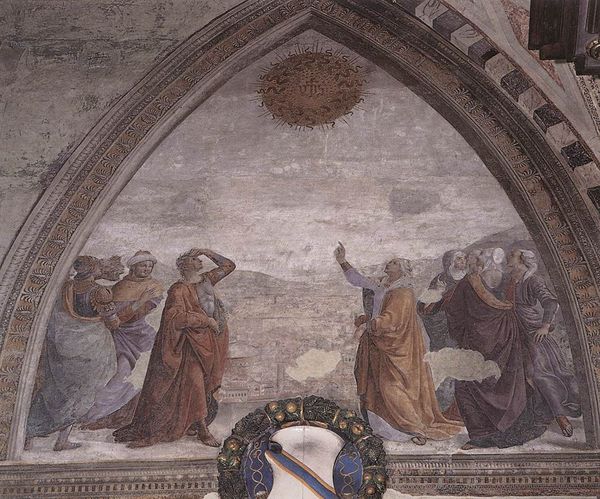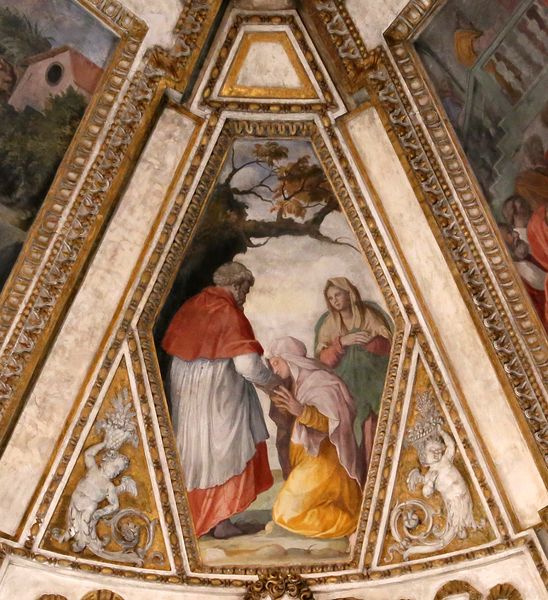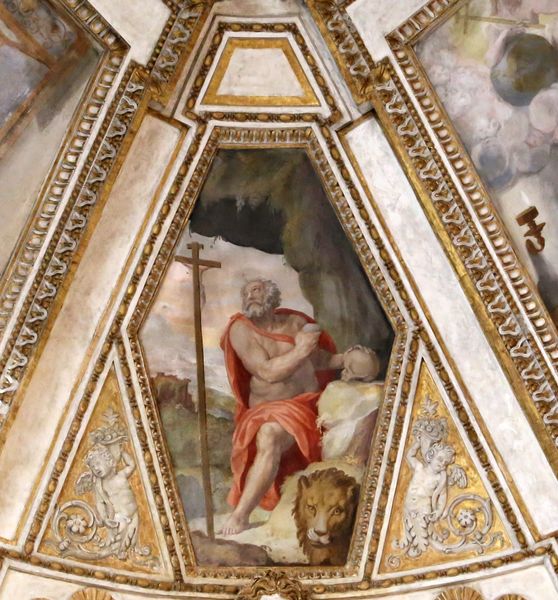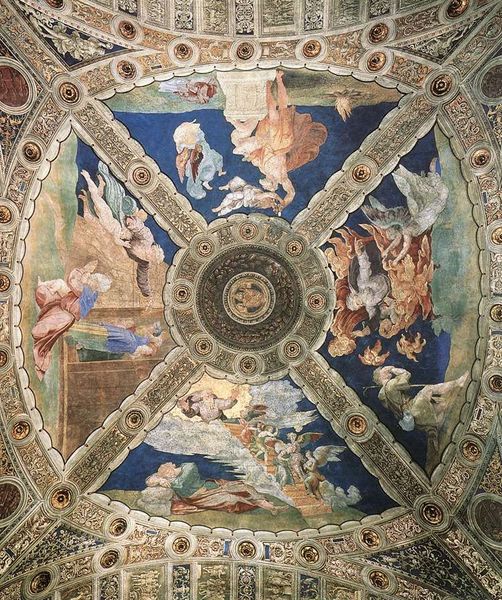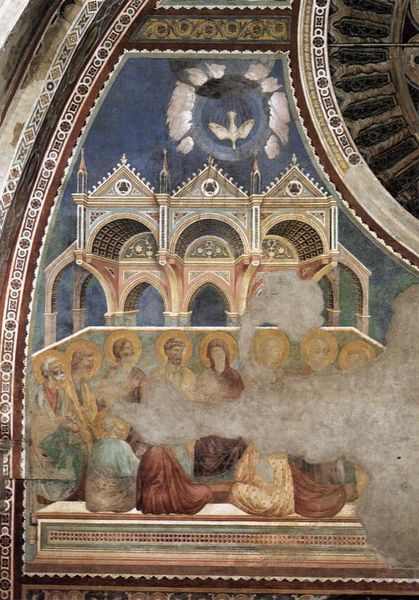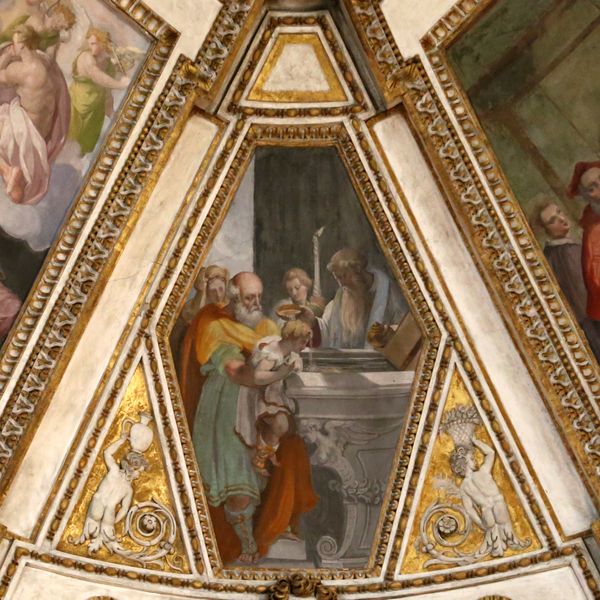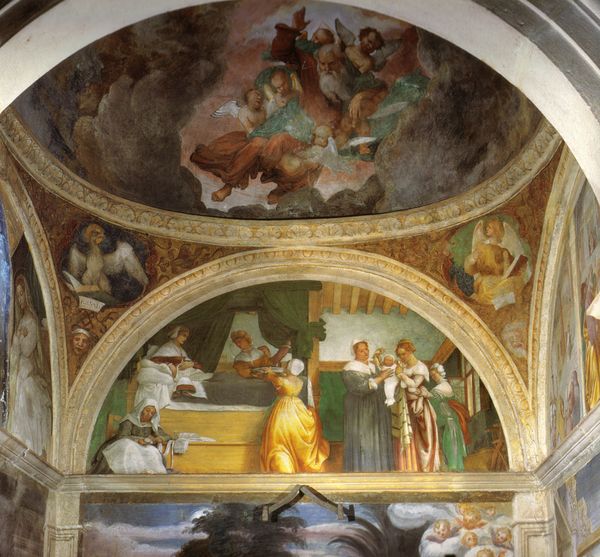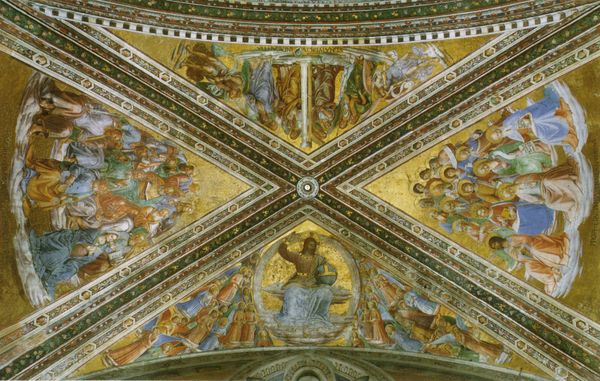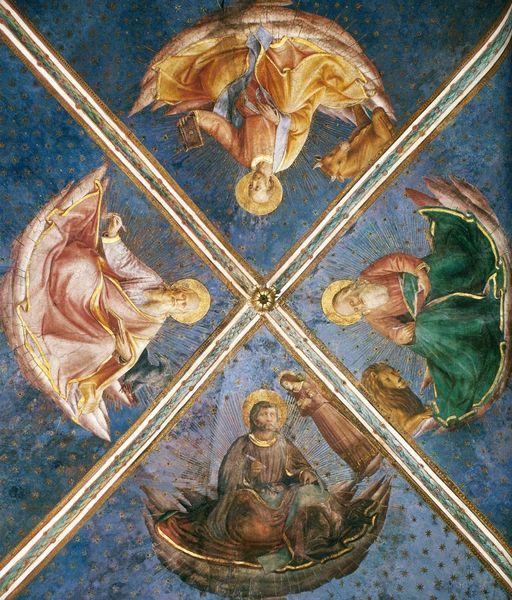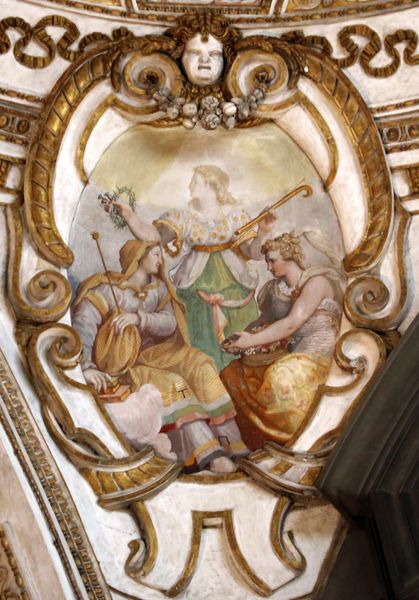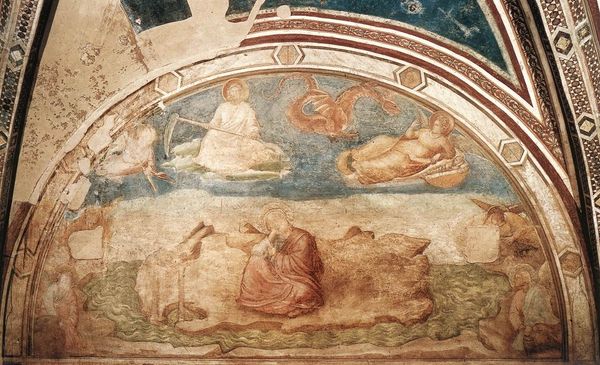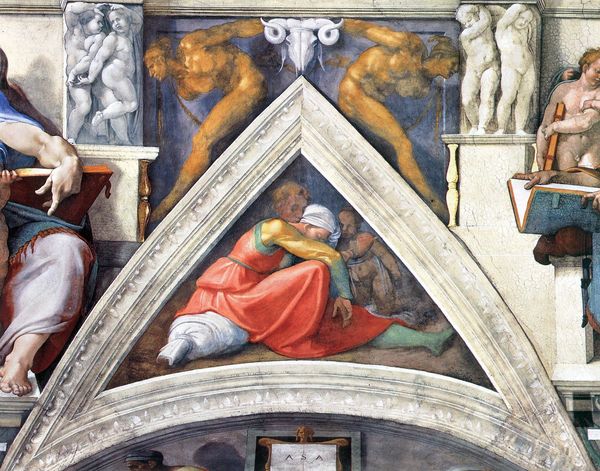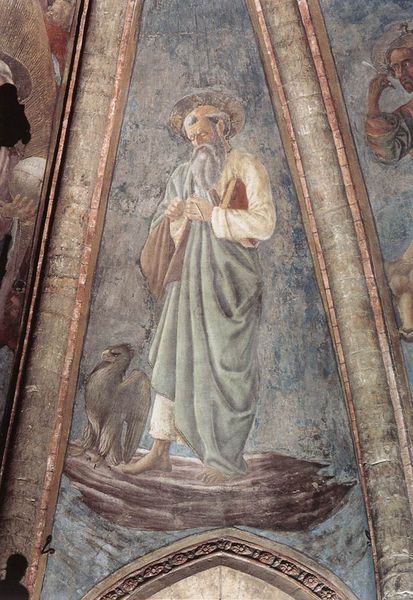
painting, fresco
#
narrative-art
#
painting
#
fresco
#
jesus-christ
#
christianity
#
history-painting
#
italian-renaissance
Copyright: Public domain
Giotto painted this image of the Ascension of Christ onto a wall using the fresco technique. This meant applying pigment to wet plaster, a method demanding speed and precision. The colors, muted earth tones, and blues, are derived from minerals and organic materials. These were ground and mixed by hand, a laborious process. Giotto and his assistants would have spent considerable time preparing the wall surface and mixing the paints, before even beginning to apply them. The quick-drying nature of fresco required the artist to work in sections, visible in the seams between the areas of the painting. The image has a weightiness, due to the material density of the plaster and pigment. The fresco medium was ideal for large-scale works like this, where permanence and visibility were paramount. Considering the resources and labor invested, it’s clear that the creation of such works were a communal endeavor, reliant on both skilled craftsmanship and patronage. Recognizing these material realities gives us a deeper appreciation for the social context in which the image was created.
Comments
No comments
Be the first to comment and join the conversation on the ultimate creative platform.
